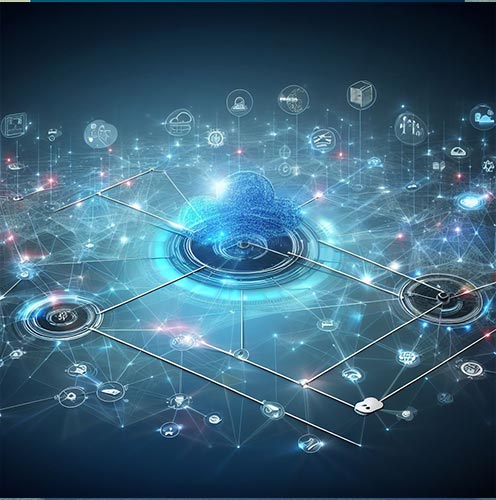In the realm of the Internet of Things (IoT), the flow of data is the lifeblood that fuels this technological revolution. But have you ever wondered how IoT devices transmit data across the digital landscape? This article serves as your comprehensive guide to understanding the intricate process of data transmission in IoT.
Unveiling the IoT Data Journey
IoT, at its core, comprises interconnected devices equipped with sensors and communication technology. These devices collect data and share it with central systems or other connected devices.
This data can range from temperature readings in a smart thermostat to heart rate measurements from a wearable fitness tracker. To understand how IoT transmits data, let’s embark on a journey through the IoT data transmission process.
-
Data Acquisition through Sensors
The journey commences at the most fundamental level – data acquisition. IoT devices, embedded with an array of sensors, continuously gather data.
These sensors can vary, from motion detectors to environmental sensors, depending on the device’s purpose. For example, a smart refrigerator may employ temperature and humidity sensors to monitor food storage conditions.
-
Data Processing at the Edge
Once the sensors collect data, the initial processing often occurs at the edge of the network. Edge computing involves analyzing and filtering data at or near the data source.
This approach is valuable because it minimizes latency and reduces the volume of data sent to central systems. Some IoT devices have the capability to process data themselves, making rapid real-time decisions.
-
Data Storage and Aggregation
After initial processing, data may be temporarily stored on the device itself or sent to a local gateway. The gateway serves as a bridge between IoT devices and central systems.
Here, data can be aggregated from multiple devices before transmission. The gateway may also perform additional processing or compression to optimize the data package.
-
Data Transmission to Central Systems
The IoT data, now refined and organized, is ready for transmission. Devices communicate through various connectivity options, including Wi-Fi, cellular networks, Bluetooth, and LPWAN (Low Power Wide Area Network). The data travels through these networks to reach central systems, typically cloud-based. Cellular networks are often preferred for remote or mobile IoT devices.
-
Data Management in the Cloud
Central systems in the cloud are designed to manage incoming data. The cloud platform stores, analyzes, and manages vast volumes of data from numerous IoT devices. This storage and processing capacity enables real-time monitoring, data analysis, and remote device management.
-
Data Analysis and Insights
Once data resides in the cloud, it becomes a treasure trove of information. Data analytics tools examine this information to extract valuable insights. These insights can be used to optimize device performance, predict maintenance requirements, and uncover user behavior patterns.
-
Data Sharing and Communication
The final stage of IoT data transmission involves sharing insights and information. This can take various forms – from sending automated alerts to users or administrators to facilitating device-to-device communication. This two-way communication is vital for implementing changes or responding to specific triggers.
Challenges and Considerations in IoT Data Transmission
While the IoT data journey seems straightforward, several complexities and challenges emerge. These include:
-
Security and Privacy
Protecting data at every stage of transmission is paramount. Data encryption, secure device authentication, and compliance with data privacy regulations are essential.
-
Network Reliability
IoT devices rely on network connectivity. Ensuring network availability and reliability is crucial, particularly for critical applications like healthcare or industrial IoT.
-
Data Volume and Scalability
IoT generates massive data volumes. Systems must be scalable to accommodate data from an ever-expanding network of devices.
-
Latency
Reducing data transmission delay is critical for real-time applications like autonomous vehicles. Edge computing helps mitigate latency issues.
-
Device Management
Managing and maintaining a large fleet of IoT devices, including firmware updates and troubleshooting, is a substantial challenge.
Concluding Thoughts: The IoT Data Ecosystem
IoT data transmission is a fascinating journey, encompassing data acquisition, processing, transmission, and cloud-based management.
This ecosystem facilitates smart homes, efficient industries, and innovative healthcare solutions. As IoT continues to evolve, it holds immense potential for reshaping various aspects of our lives.
Telirco, with its suite of services like USSD and OTP, plays an essential role in the IoT data transmission ecosystem. Contact us today to explore how Telirco can support your IoT journey and help you make the most of this transformative technology.

